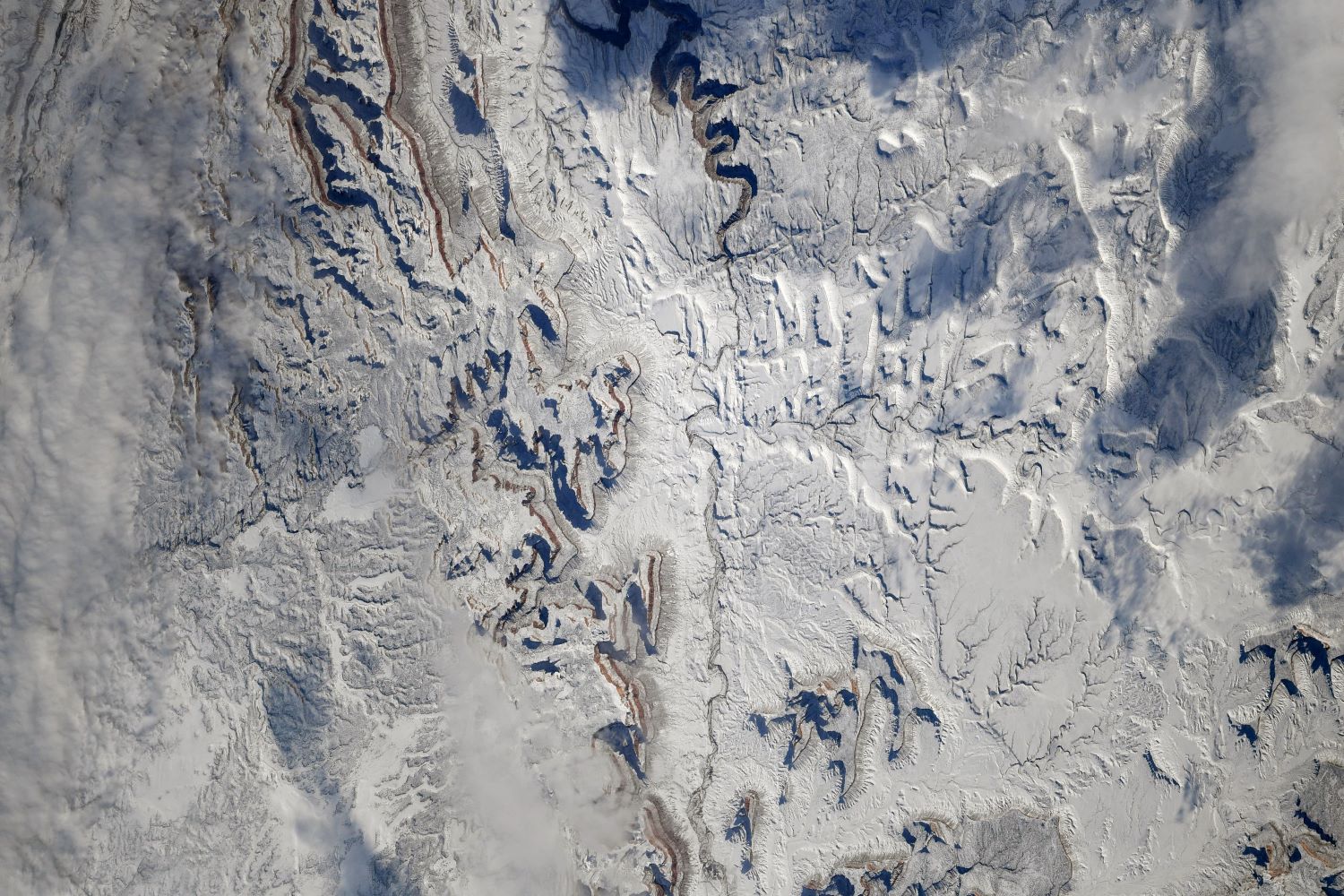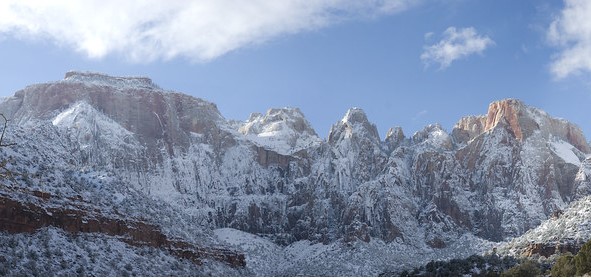[:ja]クリスティーナ・コック宇宙飛行士がISSから撮影した冬の米ユタ州のザイオン国立公園です。

593km2のザイオン国立公園の際立った特徴は、長さ24km、深さ800mのザイオン渓谷で、ノース・フォーク・ヴァージン川によって赤く日に焼けたナバホ・サンドストーン(砂岩)が侵食されたものです。コロラド高原、グレートベイスン、モハーヴェ砂漠が接する地域に位置するという、ユニークな地理的特徴とライフ・ゾーンの豊かさが並外れた動植物の多様性をもたらしています。289種の鳥類、75種の哺乳類(19種のコウモリを含む)、32種の爬虫類、多種類の植物が公園の4つのライフ・ゾーン、すなわち 砂漠、水辺、ウッドランド(乾生疎開林)、針葉樹林(乾生常緑高木林)に生息しています。人類がこの地域に住み始めたのは、約8000年前、アメリカ原住民族の少数の家族が最初とされています。半遊牧のバスケット作りのアナサジ族(西暦300年)はこれらの一族から分かれました。アナサジ族の定住が進むにつれ、ヴァージン・アナサジ文化(西暦500年)が発展しました。
地上の様子はこちらです。

参考文献: Christina Koch’s Tweet
地球俯瞰画像を見る: LiVEARTH
[Earthview Wonders] No.1218: Zion National Park🇺🇸
Astronaut Christina Koch captured from ISS Zion National Park, Utah, U.S. in winter.

A prominent feature of the 590km2 park is Zion Canyon, which is 24km long and up to 800m deep. The canyon walls are reddish and tan-colored Navajo Sandstone eroded by the North Fork of the Virgin River. Located at the junction of the Colorado Plateau, Great Basin, and Mojave Desert regions, the park has a unique geography and a variety of life zones that allow for unusual plant and animal diversity. Numerous plant species as well as 289 species of birds, 75 mammals (including 19 species of bat), and 32 reptiles inhabit the park’s 4 life zones. Human habitation of the area started about 8,000 years ago with small family groups of Native Americans, one of which was the semi-nomadic Basketmaker Anasazi (c. 300 CE). Subsequently, the Virgin Anasazi culture (c. 500) and the Parowan Fremont group developed as the Basketmakers settled in permanent communities. Both groups moved away by 1300 and were replaced by the Parrusits and several other Southern Paiute subtribes.
The local scenery on the ground is as follows.

Reference: Christina Koch’s Tweet
See earthview photo gallery: LiVEARTH[:]